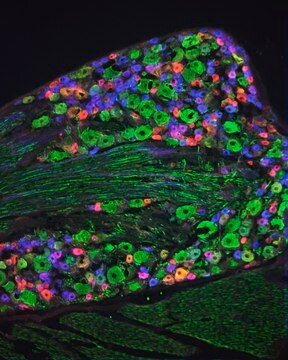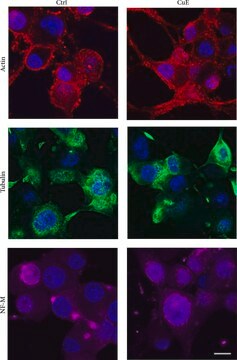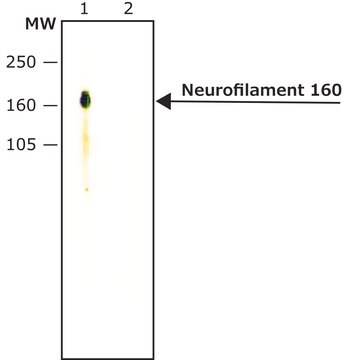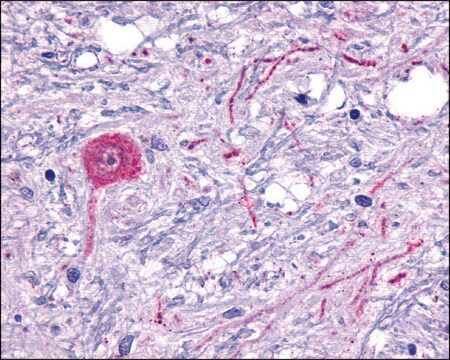N5389
Monoclonal Anti-Neurofilament 200 antibody produced in mouse

clone NE14, ascites fluid
Sinónimos:
NF200 Antibody - Monoclonal Anti-Neurofilament 200 antibody produced in mouse, Neurofilament Antibody, Nf200 Antibody, Monoclonal Anti-Neurofilament heavy chain
About This Item
Productos recomendados
biological source
mouse
Quality Level
conjugate
unconjugated
antibody form
ascites fluid
antibody product type
primary antibodies
clone
NE14, monoclonal
mol wt
antigen apparent mol wt 200 kDa
contains
15 mM sodium azide as preservative
species reactivity
pig, mouse, chicken, bovine, guinea pig, rabbit, rat, human
enhanced validation
independent ( Antibodies)
Learn more about Antibody Enhanced Validation
technique(s)
immunohistochemistry (formalin-fixed, paraffin-embedded sections): 1:40
immunohistochemistry (frozen sections): suitable
microarray: suitable
western blot: suitable
isotype
IgG1
UniProt accession no.
shipped in
dry ice
storage temp.
−20°C
target post-translational modification
unmodified
Gene Information
human ... NEFH(4744)
General description
Immunogen
Application
Immunofluorescence (1 paper)
Immunohistochemistry (1 paper)
- immunohistochemistry
- immunolabeling
- immunofluorescence
Biochem/physiol Actions
Disclaimer
¿No encuentra el producto adecuado?
Pruebe nuestro Herramienta de selección de productos.
Optional
Storage Class
10 - Combustible liquids
wgk_germany
WGK 3
flash_point_f
Not applicable
flash_point_c
Not applicable
Certificados de análisis (COA)
Busque Certificados de análisis (COA) introduciendo el número de lote del producto. Los números de lote se encuentran en la etiqueta del producto después de las palabras «Lot» o «Batch»
¿Ya tiene este producto?
Encuentre la documentación para los productos que ha comprado recientemente en la Biblioteca de documentos.
Los clientes también vieron
Nuestro equipo de científicos tiene experiencia en todas las áreas de investigación: Ciencias de la vida, Ciencia de los materiales, Síntesis química, Cromatografía, Analítica y muchas otras.
Póngase en contacto con el Servicio técnico









